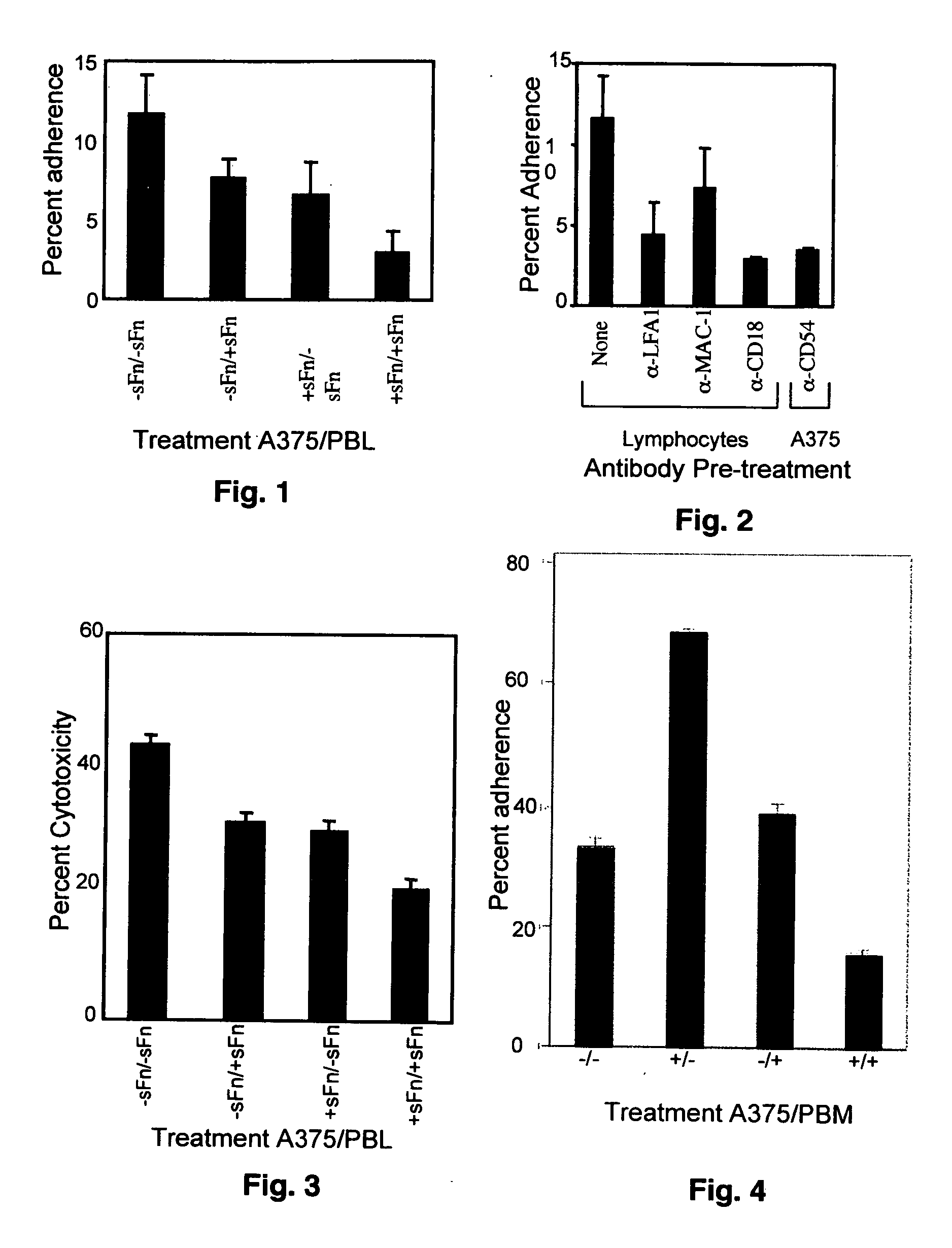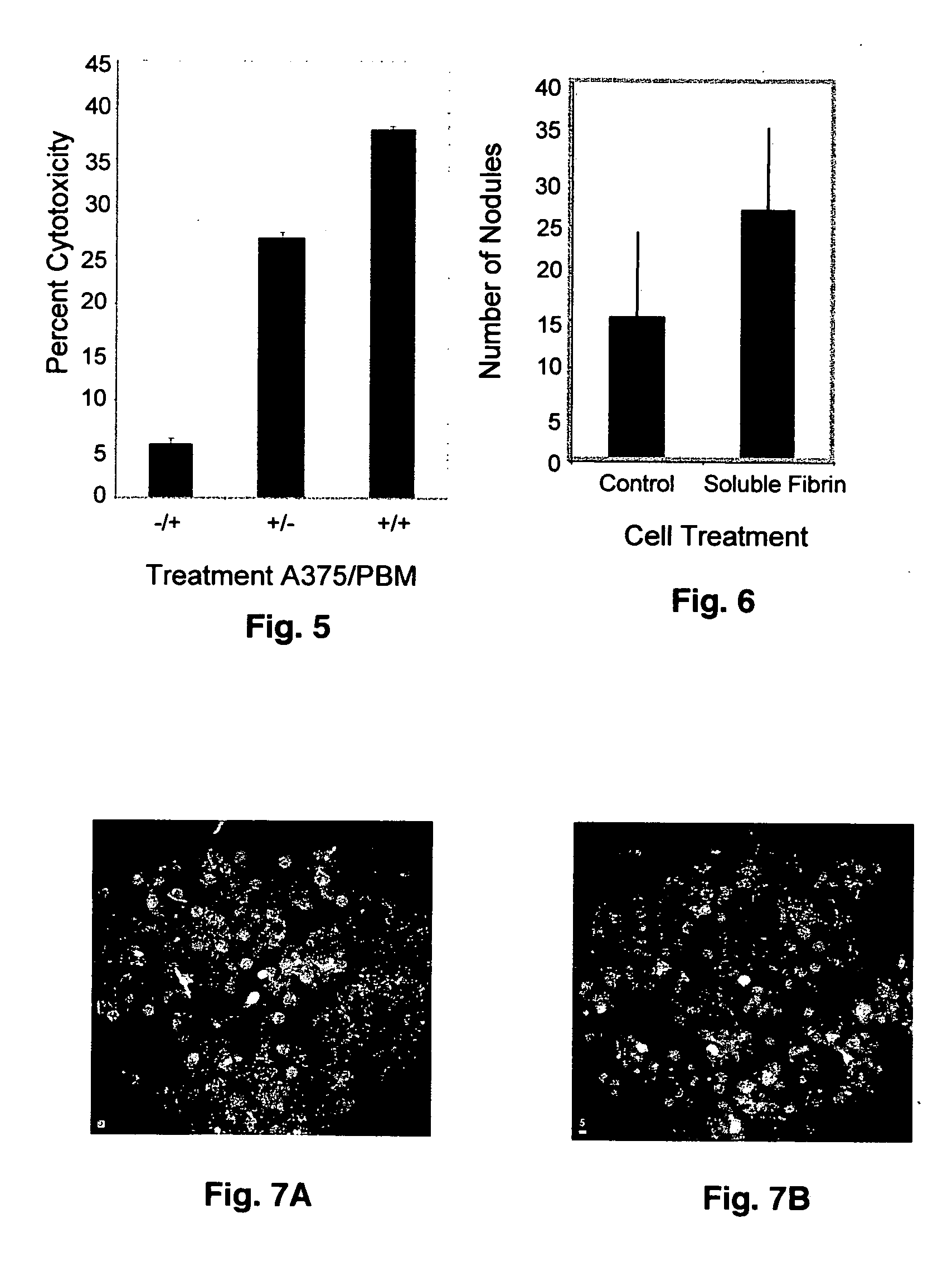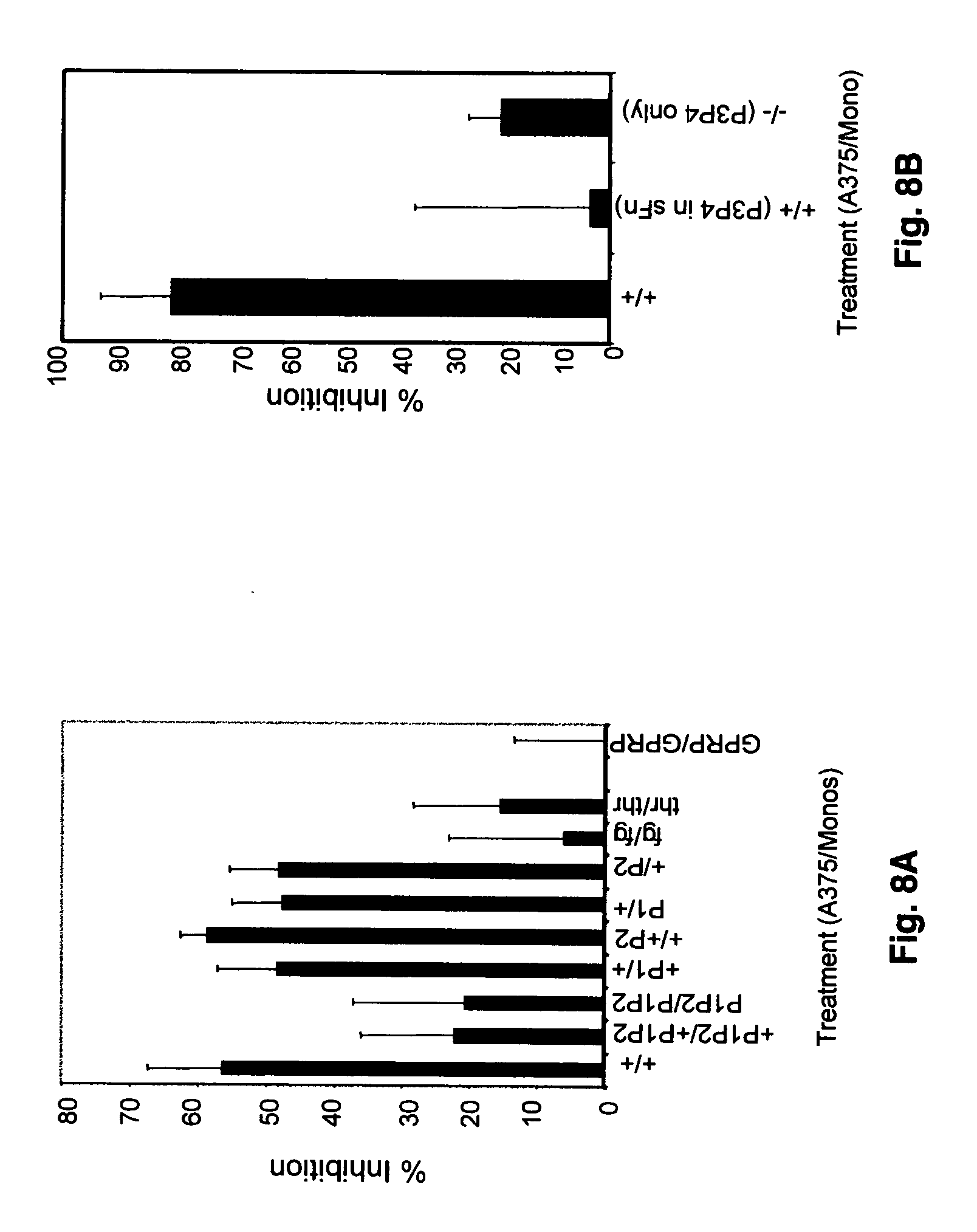Soluble fibrin inhibitory peptides and uses thereof
a technology of soluble fibrin and inhibitory peptides, which is applied in the field of blood coagulation and immunology, can solve the problems of insufficient knowledge of the role of soluble fibrin in the prior art, inability to consider the elevated plasma levels of soluble fibrin (which are likely to be conformationally altered) in the blood, and inability to achieve the effect of reducing the inhibition of cell adhesion, restoring the immune response, and inhibiting progression
- Summary
- Abstract
- Description
- Claims
- Application Information
AI Technical Summary
Benefits of technology
Problems solved by technology
Method used
Image
Examples
example 1
Soluble Fibrin Mediated Immunosuppression
[0072] Soluble fibrin mediated immunosuppression was evaluated by performing leukocyte adherence and cytotoxicity assays. It was observed that lymphocyte adherence against A375 cells was inhibited by soluble fibrin pre-treatment of either cell type, and was maximal when both cells were pre-treated (FIG. 1). This suggested that soluble fibrin binds to receptors on both cells. As expected, lymphocyte adherence was significantly inhibited by incubation with anti-LFA-1, anti-CD18 and to a lesser extent by anti-mac-1 (FIG. 2). The latter was probably due to the contribution of NK cells in the lymphocyte population. NK cells express both mac-1 and LFA-1 whereas lymphocytes express only LFA-1 and are reported to be unresponsive to anti-mac1 (Timonen et al., 1988). Marked inhibition was also observed after pre-incubation of A375 cells with anti-CD54. These results indicated a primary role for the β2 integrins in lymphocyte binding to CD54 on the tu...
example 2
Reversal of sFn Mediated Immunosuppresion Using Specific Peptides
(a) Continuous Perfusion of Monocytes in a Stage Incubator:
[0074] Human peripheral blood monocytes, isolated by density centrifugation and adherence were labeled with the carbocyanine dye (DiI, C18; Molecular Probes, Eugene, OR). They were passed across adherent soluble fibrin treated or untreated tumor cells at a shear force corresponding to that present in small blood capillaries for 1 h (FIGS. 7A and 7B).
[0075] The number of tumor cells and adherent monocytes were counted in the images and leukocyte adherence was expressed as the number of leukocytes per tumor cell. Pre-treatment of the tumor cells with soluble fibrin resulted in significantly (P<0.05) decreased monocyte binding to tumor cells. These experiments agreed with the results from the static adherence assay and demonstrated a technique to enumerate leukocyte adherence to tumor cells under flow conditions.
(b) Effect of Peptides on the Binidng of Fibr...
example 3
Inhibition of Monocyte Adherence and Cytotoxicity of Tumor Cell by sFn
[0079] The role of sFn in the etiology of metastatic cancer growth has not been extensively studied. It was reported that sFn cross-linked platelet binding to tumor cells via the major platelet fibrin receptor αIIbβ3 and tumor cell CD54 (ICAM-1), which is the receptor for two of the leukocyte β2 integrins (αLβ2 and αMβ2). Furthermore, in rat experimental metastasis model, sFn pre-treatment of tumor cells enhanced metastasis by over 60% compared to untreated cells. Other studies had shown that fibrin(ogen) binds to the monocyte integrin αMβ2. Based on this, the present invention sought to investigate the effect of sFn on β2 integrin mediated monocyte adherence and killing of tumor cells.
[0080] The role of sFn in monocyte adherence and cytotoxicity against tumor cells was initially studied using static microplate adherence and cytotoxicity assays, and under physiologically relevant flow conditions in a microscope...
PUM
| Property | Measurement | Unit |
|---|---|---|
| Fraction | aaaaa | aaaaa |
| Fraction | aaaaa | aaaaa |
| Density | aaaaa | aaaaa |
Abstract
Description
Claims
Application Information
 Login to View More
Login to View More - R&D
- Intellectual Property
- Life Sciences
- Materials
- Tech Scout
- Unparalleled Data Quality
- Higher Quality Content
- 60% Fewer Hallucinations
Browse by: Latest US Patents, China's latest patents, Technical Efficacy Thesaurus, Application Domain, Technology Topic, Popular Technical Reports.
© 2025 PatSnap. All rights reserved.Legal|Privacy policy|Modern Slavery Act Transparency Statement|Sitemap|About US| Contact US: help@patsnap.com



